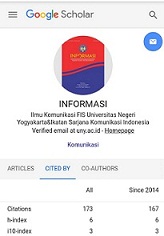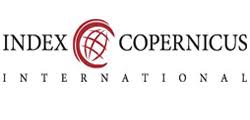The influence of social media of Universitas Negeri Yogyakarta Gunungkidul Campus to create brand image on student decision making
DOI:
https://doi.org/10.21831/informasi.v52i1.49375Keywords:
social media, brand image, UNY official, UNY Gunungkidul, mecision makingAbstract
In 2020, Universitas Negeri Yogyakarta (UNY) opened a new vocational campus in Gunungkidul Regency. The Socialization of UNY Gunungkidul campus by the admission department cannot be performed face-to-face due to the Covid-19 pandemic. Therefore, UNY Gunungkidul Campus socializes the enrollment programs via online mode. The opening of the campus aims to equalize and improve the quality of high school education in Yogyakarta. Gunungkidul is the regency with the second highest number of poor people in Yogyakarta. UNY Gunungkidul Campus utilizes social media as a promotional media to support the formation of a brand image for student decision making. This study employed a descriptive quantitative approach using a Likert scale measurement. The population in the study was 502 students. The samples were calculated using the Albert Harkin & Colton table formulation which obtained 90 respondents. This analysis utilized SPSS 16 software. The results of this study show that 64.5% of 2020 student decision making is influenced by social media, although the promotion is still centered on the UNY Official account.
References
Chaffey, D., & Ellis-Chadwick, F. (2019).Digital marketing: strategy, implementation & practice. Pearson uk.
Chan-Olmsted, S. M., Cho, M., & Lee, S. (2013). User perceptions of social media: A comparative study of perceived characteristics and user profiles by social media. Online Journal of Communication and Media Technologies, 3(4), 149-178. https://doi.org/10.29333/ojcmt/2451.
Echchabi, A., & Al-Hajri, S. (2018). Factors influencing students' selection of universities: The case of Oman. Journal of Education Research and Evaluation, 2(2), 83. https://doi.org/10.23887/jere.v2i2.13694
Herawati, H., Prajanti, S. D. W., & Kardoyo, K. (2019). Predicted purchasing decisions from lifestyle, product quality and price through purchase motivation. Journal of Economic Education, 8(1), 1-11. DOI 10.15294/JEEC.V8I1.29636
Joshi, A., Kale, S., Chandel, S., & Pal, D. (2015). Likert scale: Explored and explained. British Journal of Applied Science & Technology, 7(4), 396–403. https://doi.org/10.9734/bjast/2015/14975
Kietzmann, J. H., Hermkens, K., McCarthy, I. P., & Silvestre, B. S. (2011). Social media? Get serious! Understanding the functional building blocks of social media. Business Horizons, 54(3), 241–251. https://doi.org/10.1016/j.bushor.2011.01.005
Kusumawati, A. (2019). Impact of digital marketing on student decision making process of higher education institution: A case of Indonesia.
Journal of E-Learning and Higher Education, 2019, 1–11. https://doi.org/10.5171/2019.267057
Martin, C. M. (2015). Social media engagement and collegiate recruitment: Anexamination of the use of social networks in the college recruitment and student choice processes. Dissertations. Paper 93. https://digitalcommons.wku.edu/diss/93
Purwana, D., Rahmi, R., & Aditya, S. (2017). Pemanfaatan digital marketing bagi usaha mikro, kecil, dan menengah (UMKM) di Kelurahan Malaka Sari, Duren Sawit. Jurnal Pemberdayaan Masyarakat Madani (JPMM), 1(1), 1–17. https://doi.org/10.21009/jpmm.001.1.01
Randheer, K., Al-Motawa, A., & Khan, M. (2012). (2012). Multidimensional issue of brand image. International Review of Bussiness and Social Science" s , 1 (9). 1, 2012.
Rulli, N. (2015). Media sosial perspektif komunikasi, budaya, dan sosioteknologi. Simbiosa Rekatama Media.
Rusnandar. (2020). Strategi pemilihan media promosi perguruan tinggi dengan pendekatan data pendaftar, dalam Mengelola perubahan dan transformasi di era disruptif. 2. 93-106.
Singarimbun, M & Effendi S. (2011). Metodologi penelitian survei. Edisi Revisi. LP3ES Indonesia
Downloads
Published
How to Cite
Issue
Section
Citation Check
License
Authors who publish with this journal agree to the following terms:- Authors retain copyright and grant the journal right of first publication with the work simultaneously licensed under a Creative Commons Attribution License that allows others to share the work with an acknowledgement of the work's authorship and initial publication in this journal.
- Authors are able to enter into separate, additional contractual arrangements for the non-exclusive distribution of the journal's published version of the work (e.g., post it to an institutional repository or publish it in a book), with an acknowledgement of its initial publication in this journal.
- Authors are permitted and encouraged to post their work online (e.g., in institutional repositories or on their website) prior to and during the submission process, as it can lead to productive exchanges, as well as earlier and greater citation of published work (See The Effect of Open Access).























